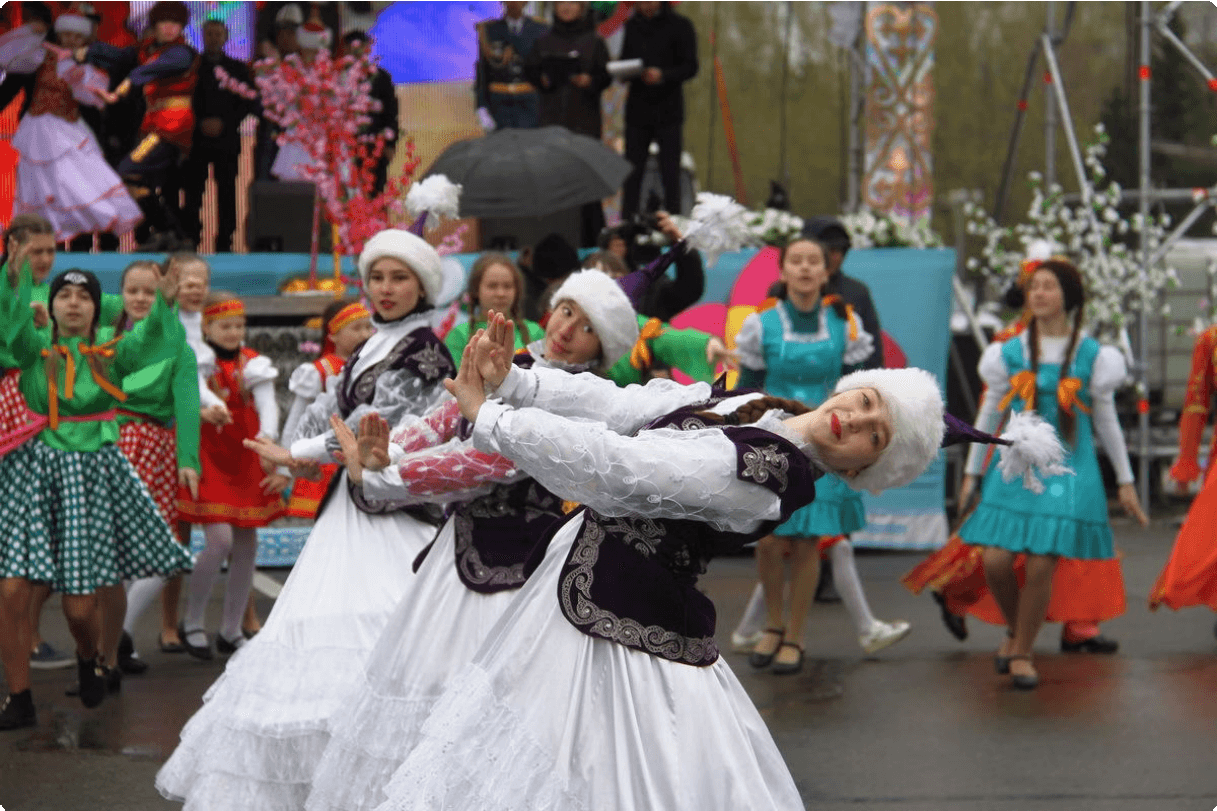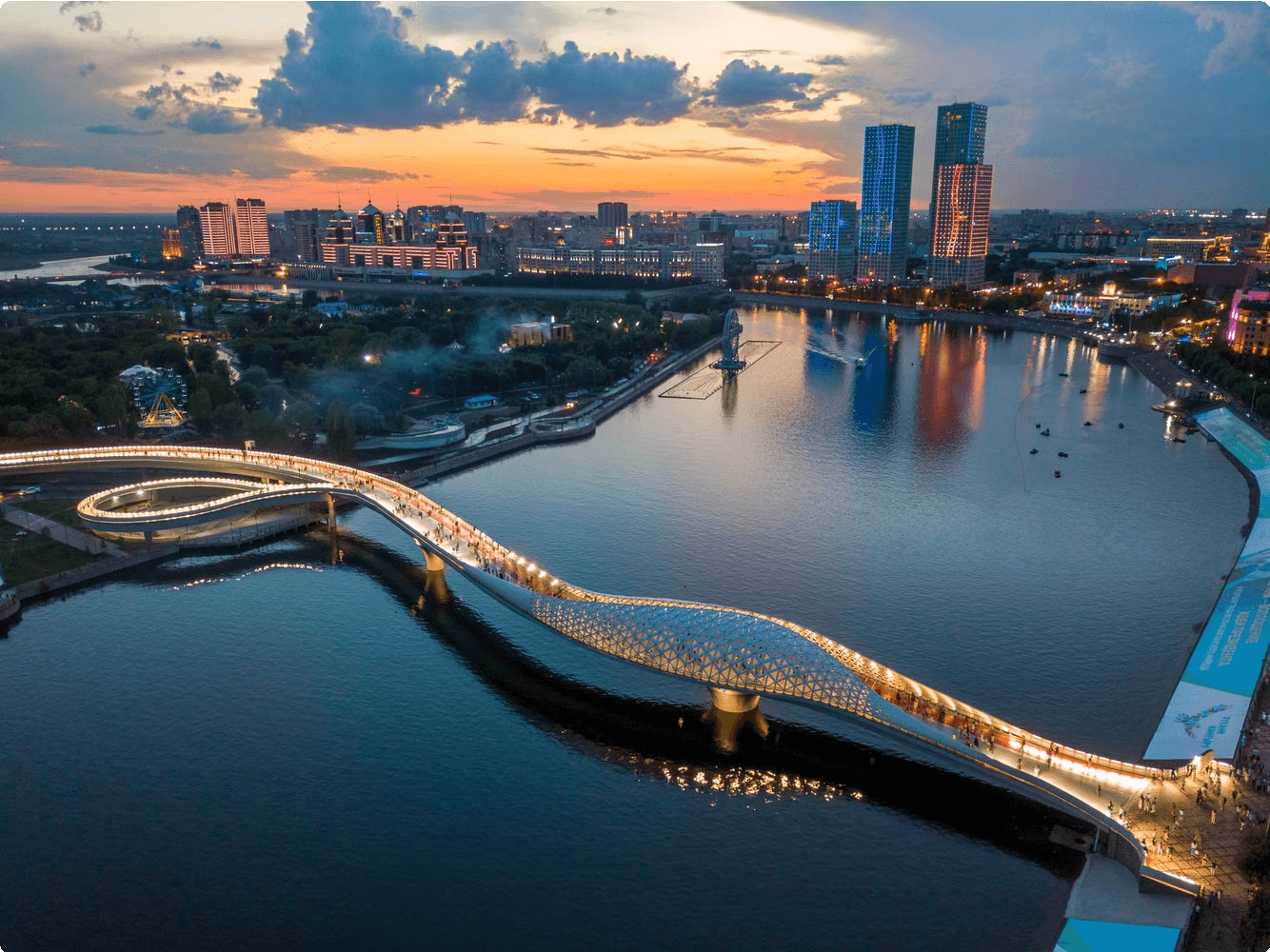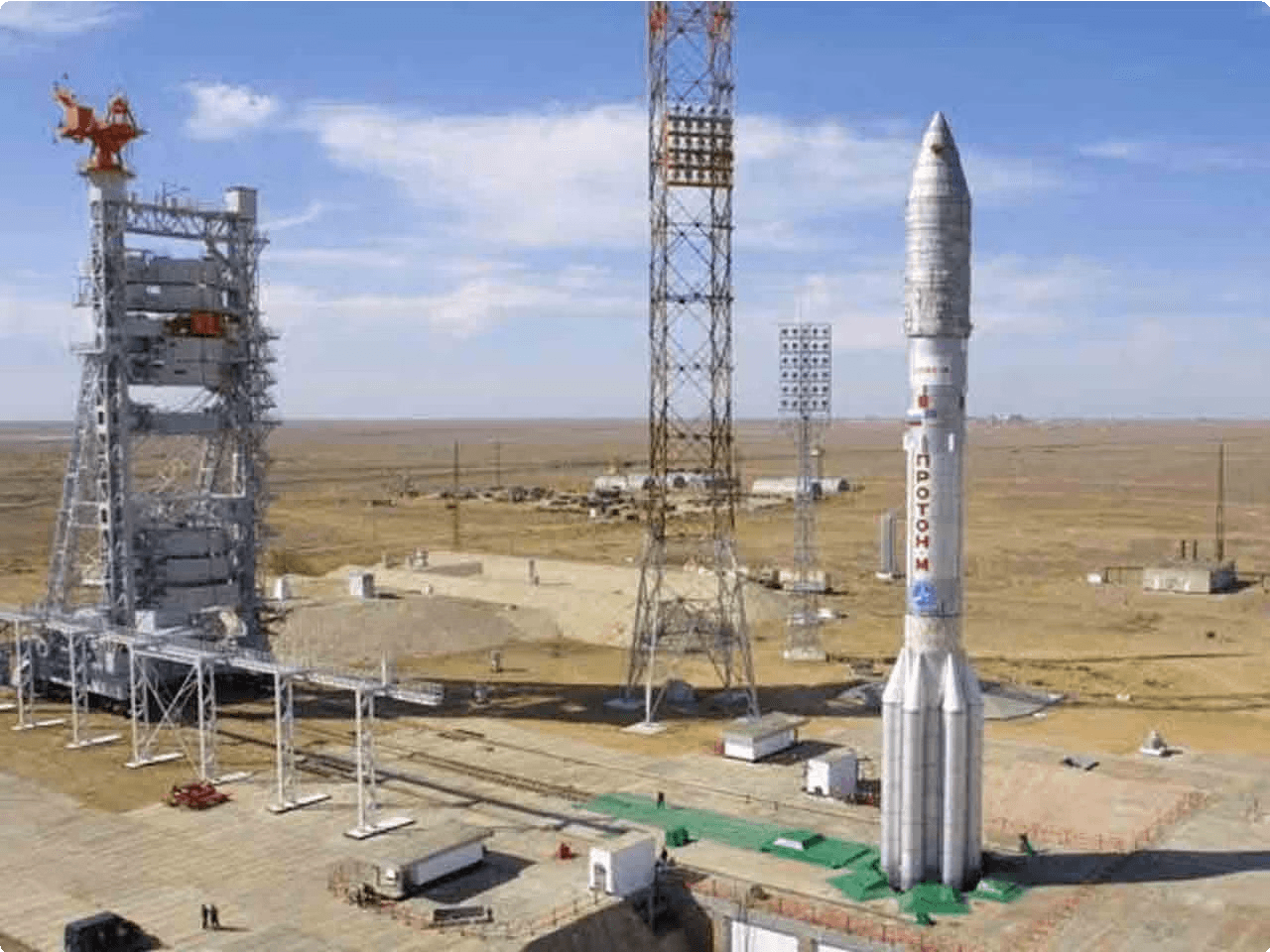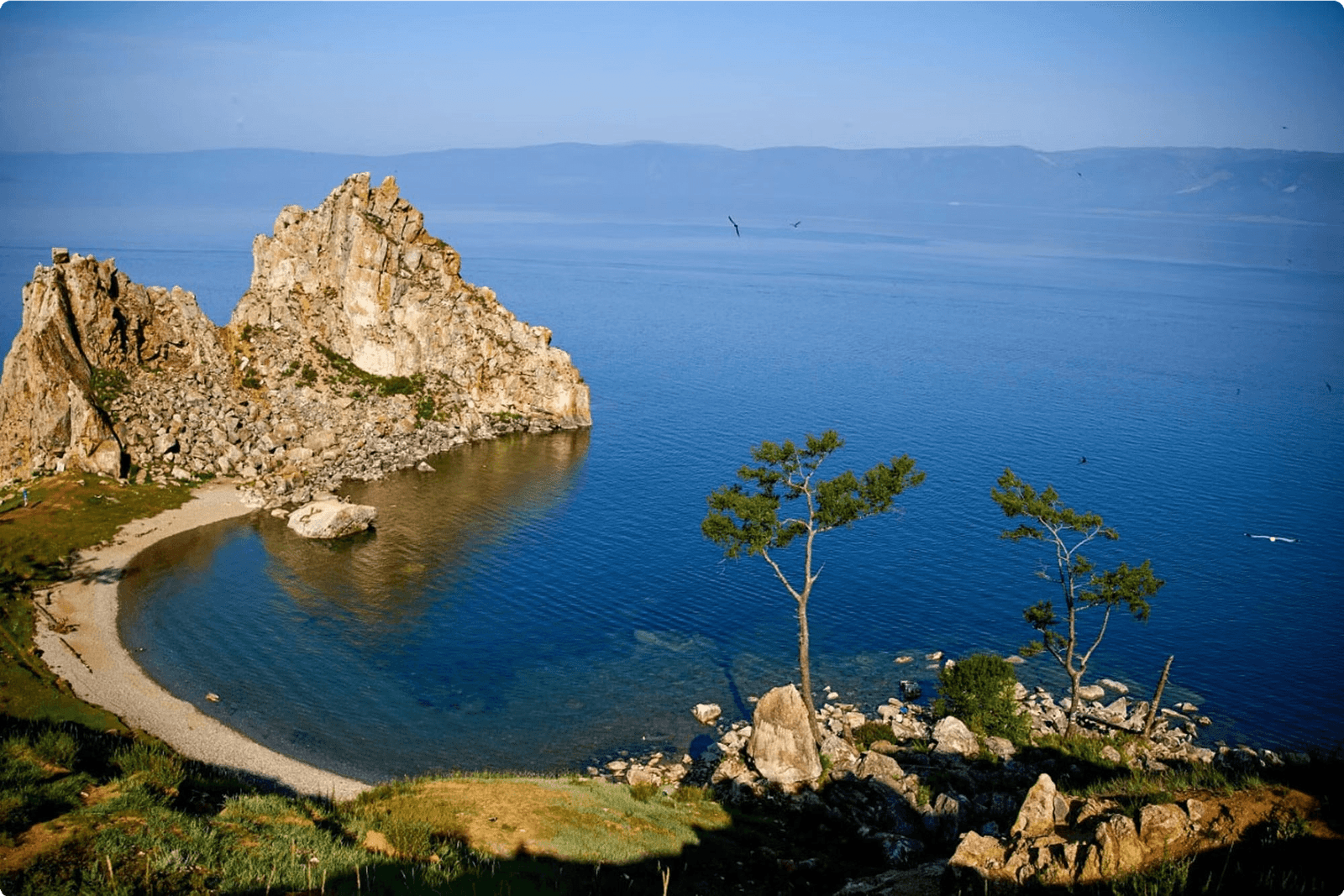Kazakhstan
Discover Kazakhstan
Kazakhstan, the world’s largest landlocked country, is located in Central Asia and Eastern Europe. It is known for its rich history, diverse culture, and stunning landscapes. The country is filled with endless steppes, majestic mountains, and beautiful lakes, offering a unique blend of natural beauty and modern urban life.

The people of Kazakhstan are warm and hospitable with a deep-rooted tradition of nomadic heritage. The country’s vibrant culture is showcased through its traditional dances, music, and art, reflecting the fusion of various ethnic groups. Kazakhstan’s cuisine is a delightful mix of flavors, featuring dishes like Beshbarmak, a traditional meat and noodle dish, and Kumis, a popular fermented horse milk beverage.
National Flag and Symbols
National Flag
The national flag of Kazakhstan consists of a golden sun with 32 rays above a soaring golden steppe eagle. The rays and eagle are centered on a sky blue background with a vertical stripe of the national ornament, “Koshkar-Muiz”, on the hoist side. The design represents the bright future of the country and the harmony between tradition and progress.

National Emblems
Kazakhstan’s national emblem features a shanyrak (roof of a yurt) in gold, with supports on either side, under a soaring golden steppe eagle and a ribbon with the national motto “Қазақстан” (Kazakhstan). The shanyrak symbolizes home, unity, and family, while the eagle represents freedom, strength, and power.
National Anthem
“My Kazakhstan” is the national anthem of Kazakhstan, composed by Shamshi Kaldayakov with lyrics by Zhumeken Nazhimedenov. The anthem reflects the pride, patriotism, and love for the country, celebrating its natural beauty, history, and aspirations for the future.
Geographical Location and Map
Kazakhstan is the world’s largest landlocked country, strategically located in Central Asia and Eastern Europe. It shares borders with Russia, China, Kyrgyzstan, Uzbekistan, and Turkmenistan, making it a key player in regional geopolitics and trade.
The diverse geography of Kazakhstan includes expansive steppes, deserts, and mountain ranges, such as the majestic Altai and Tian Shan mountains. The country also boasts the Caspian Sea coastline, adding marine diversity to its landscape.

The map of Kazakhstan showcases its vast territory, highlighting its position as a bridge between the East and the West. It is a land of contrast, from the arid deserts of the south to the lush, green plains of the north.
For a visual representation, a map of Kazakhstan with its diverse geographical features, including mountains, deserts, and rivers, would provide a comprehensive understanding of the country’s topography and its position on the world map.
Currency and Economy
Currency
The official currency of Kazakhstan is the Kazakhstani Tenge (KZT). Originally introduced in 1993, the tenge has undergone various changes to stabilize its value and promote economic growth. It is subdivided into 100 tiyn, and the currency symbol is ₸.
Economy
Kazakhstan has a rapidly growing economy driven by its abundant natural resources, particularly in the oil and gas sectors. The country is the world’s largest landlocked country and boasts rich reserves of minerals and metals. Additionally, Kazakhstan has been investing heavily in infrastructure, innovation, and diversifying its economy to reduce its dependence on raw materials.
Cultural Diversity and Traditions
Kazakh Yurts
Kazakh yurts, known as “kuy” in Kazakh language, are traditional portable homes typically constructed with wooden frames and felt coverings. These nomadic dwellings have been an integral part of Kazakh culture for centuries and represent the unique lifestyle and traditions of the Kazakh people.

Kazakh National Dress
The traditional Kazakh attire is a beautiful reflection of the country’s cultural heritage. The garments are adorned with intricate embroidery, bright colors, and distinct designs, each representing different regions and tribes within Kazakhstan.

Eagle Hunting Tradition
Eagle hunting is a centuries-old practice among the Kazakh nomads, where majestic golden eagles are trained for hunting prey. This unique tradition not only showcases the Kazakh people’s strong connection with nature but also exemplifies their remarkable skills in falconry.

Traditional Kazakh Dance
Kazakh traditional dance is an integral part of the country’s rich cultural heritage, characterized by graceful movements, vibrant costumes, and rhythmic music. Each dance reflects the history, traditions, and values of the Kazakh people, often depicting scenes from daily life, celebrations, or historical events.
One of the most famous dances is the “Beshbarmak,” which is performed during festive occasions and symbolizes unity and friendship. Another notable dance is the “Kara Zhorga,” known for its energetic and dynamic choreography, representing the nomadic spirit and resilience of the Kazakh nomads.

The traditional dance performances often feature intricate footwork, expressive gestures, and the use of props such as scarves and hand drums. These captivating presentations showcase the diversity and depth of Kazakh culture, captivating audiences with their storytelling and artistry.
The striking visuals and vibrant expressions of traditional Kazakh dance make it a captivating and memorable experience, reflecting the pride and passion of the Kazakh people for their rich cultural heritage.
Famous Kazakh Celebrities
Gennady Golovkin
Gennady Golovkin, also known as GGG, is a world-renowned professional boxer from Kazakhstan. He is a former unified middleweight world champion, known for his powerful and aggressive fighting style.
Golovkin has achieved international recognition for his impressive record and is considered one of the best pound-for-pound boxers in the world.

Dinara Kasko
Dinara Kasko is a celebrated pastry chef and architectural designer hailing from Kazakhstan. She gained fame for her innovative approach to pastry design, blending the worlds of architecture and baking to create stunning and visually striking desserts. Kasko’s work has been featured in renowned culinary publications and exhibitions worldwide.

Alexander Vinokourov
Alexander Vinokourov is a legendary Kazakh professional road bicycle racer and current general manager of UCI WorldTeam Astana-Premier Tech. Vinokourov has had an illustrious career, with
numerous victories in prestigious cycling competitions, including stage wins in the Tour de France and an
Olympic gold medal. He is widely regarded as a national hero in Kazakhstan.

Kazakh Cuisine and Traditional Food
Kazakh cuisine is a rich tapestry of flavors and traditional dishes deeply rooted in the nomadic lifestyle of the region. One of the central elements of Kazakh cuisine is meat, with lamb and horse meat being
particularly popular. Beshbarmak, a traditional dish featuring boiled meat (usually lamb or horse) served over a bed of flat noodles, is considered a national delicacy.

Aside from meat dishes, dairy products also hold a special place in Kazakh cuisine. Kumis, fermented mare’s milk, and kurt, a type of dried cheese, have been consumed by the Kazakhs for centuries. Additionally, bread, particularly the flatbread known as baursak, is a staple in Kazakh meals.
Furthermore, the influence of the Silk Road has led to a fusion of flavors in Kazakh cuisine, with dishes like laghman noodles and manti dumplings showcasing the diverse cultural heritage of the country. The generous use of spices such as cumin, coriander, and black pepper adds depth and complexity to Kazakh dishes.
Popular Tourist Destinations
Almaty: Known as the cultural capital, Almaty is nestled at the base of the Trans-Ili Alatau mountains. It offers a blend of modern urban life and breathtaking natural landscapes, including the Big Almaty Lake.
Astana (Nur-Sultan): As the futuristic city of Kazakhstan, Astana, now called Nur-Sultan, showcases innovative architecture, such as the Bayterek Tower and the Palace of Peace and Reconciliation.
Shymkent: Often referred to as the gateway to the south, Shymkent boasts a rich history and vibrant culture, with notable landmarks like the Independence Monument and the Abay Park.
Karaganda: Recognized as the industrial heartland, Karaganda offers unique experiences, including visits to the eerie and historically significant “Dolinka” Soviet concentration camp.
Atyrau: Situated as the oil capital, Atyrau is an intriguing mix of modern development and ancient heritage, with attractions like the Atyrau City Museum and the Ural River embankment.
Almaty – The cultural capital
History and Heritage
Almaty, the cultural capital of Kazakhstan, has a rich history and heritage. It was the country’s capital until 1997 and has been a center for cultural exchange, trade, and artistic expression for centuries. The city has preserved its historical buildings and landmarks, blending modernity with tradition.

Arts and Entertainment
Almaty boasts a vibrant arts and entertainment scene, with numerous theaters, museums, and art galleries. The city hosts various cultural events, including music festivals, dance performances, and art exhibitions, showcasing the diverse and dynamic cultural expressions of Kazakhstan.
Cuisine and Gastronomy
The culinary scene in Almaty is a melting pot of flavors, featuring traditional Kazakh cuisine as well as a fusion of international dishes. From cozy family-owned restaurants to trendy cafes and upscale dining establishments, the city offers a delightful gastronomic experience for food enthusiasts.
Astana (Nur-Sultan) – The futuristic city
Futuristic Architecture: Modern and innovative building designs
Expanding Urban Landscape: Rapid development and urban planning
Technological Advancements: Integration of technology in city infrastructure

Astana, now known as Nur-Sultan, is truly a futuristic city that showcases remarkable architecture, embracing modern design and innovation in every aspect. The urban landscape of the city is constantly expanding with rapid development and urban planning, reflecting the vision for a cutting-edge metropolis. The city is at the forefront of technological advancements, integrating state-of-the-art technology in its infrastructure to become a prime example of a smart city. As a result, Astana (Nur- Sultan) stands as a testament to the boundless possibilities of the future.
Shymkent – The gateway to the south
Rich History: Ancient city with diverse cultural influences
Modern Architecture: Blend of traditional and contemporary buildings
Cultural Heritage: Home to vibrant music, art, and dance traditions

Shymkent, the third-largest city in Kazakhstan, is known as the gateway to the south. This historical city boasts a rich past, evident in its ancient landmarks, diverse cultural influences, and archaeological sites. Not just steeped in history, Shymkent also showcases modern architecture, with a unique blend of traditional and contemporary buildings that captivate visitors. The city is a melting pot of cultural heritage, home to vibrant music, art, and dance traditions that have been passed down through generations. By exploring Shymkent, visitors can delve into the heart of Kazakhstan’s rich and diverse cultural tapestry.
Karaganda – The Industrial Heartland
Karaganda is located in the central part of Kazakhstan and is known as the “Industrial Heartland” of the country. It is one of the largest and most important industrial cities in Kazakhstan, with a rich history rooted in mining and metallurgy.

The city played a significant role during the Soviet era, contributing to the country’s industrial development. Today, Karaganda is home to a diverse industrial sector, including coal mining, steel production, and machinery manufacturing.
Despite its industrial focus, Karaganda also boasts cultural and historical attractions, such as the Karaganda State Academic Drama Theater and the Temirtau Museum of Metallurgical History. Visitors can explore the city’s Soviet-era architecture and learn about its contributions to Kazakhstan’s industrial heritage.
Atyrau – The oil capital of Kazakhstan
Economic Significance
Atyrau is known as the oil capital of Kazakhstan, boasting a thriving petroleum industry. The city is a major hub for oil exploration, production, and refining, playing a pivotal role in the country’s economy. The petroleum sector in Atyrau has attracted significant foreign investment and has contributed to Kazakhstan’s position as one of the leading oil-producing nations in the world.

Cultural Fusion
Despite its modern focus on oil, Atyrau retains a rich cultural heritage, offering a unique blend of traditional Kazakh customs and the influence of the multinational oil companies operating within the city. This fusion of cultures adds an intriguing dynamic to the city’s social fabric, making it a compelling destination for those interested in exploring the intersection of tradition and modernity.
Riverine Beauty
Set along the majestic Ural River, Atyrau is blessed with picturesque riverfront views and breathtaking natural landscapes. The city’s proximity to the river provides opportunities for scenic boat rides, leisurely walks along the waterfront promenades, and stunning sunset vistas that create a serene and captivating atmosphere amidst the bustling oil industry.
Baikonur Cosmodrome – The Space Launch Site
Established
In 1957, Baikonur Cosmodrome was established as the world’s first and largest operational space launch facility.

Successful Launches
With a track record of 87 successful launches, Baikonur has been integral to space exploration.
Lake Baikal – The World’s Deepest Lake
Lake Baikal, located in Siberia, Russia, is not only the world’s deepest lake but also the oldest and the largest freshwater lake by volume. Its depth reaches to over 5,000 feet, and it holds approximately 20% of the world’s unfrozen surface freshwater, making it critically important for biodiversity and scientific research.

This ancient lake is home to a remarkable array of flora and fauna, including the endemic Baikal seal. The clear, turquoise-blue water and the surrounding mountain ranges create a mesmerizing landscape, attracting nature enthusiasts, photographers, and scientists from around the globe.
Charyn Canyon – The Grand Canyon of Kazakhstan
The Charyn Canyon, often referred to as “The Grand Canyon of Kazakhstan,” is a natural wonder that showcases the breathtaking beauty of the country’s landscape. Located in the Charyn National Park, this geological formation is characterized by deep, colorful gorges, towering rock formations, and unique landforms sculpted by the Charyn River over millions of years.
This magnificent canyon spans over 80 kilometers in length and is renowned for its stunning array of colors, with hues of red, orange, and yellow adorning the rock walls, particularly during sunrise and sunset, creating a mesmerizing display of natural beauty. The sheer magnitude of the canyon, combined with its intricate formations, makes it a must-see destination for nature enthusiasts and adventure seekers.

The Charyn Canyon offers opportunities for hiking, rock climbing, and photography, allowing visitors to immerse themselves in the awe-inspiring surroundings. It serves as a testament to Kazakhstan’s diverse and awe-inspiring landscapes, drawing travelers from around the world to witness its grandeur and experience the allure of the great outdoors.
Exploring the Charyn Canyon provides an unforgettable experience, allowing visitors to connect with the raw, unspoiled beauty of Kazakhstan’s natural heritage while marveling at the impressive geological forces that have shaped this majestic masterpiece over time.
Kolsai Lakes – The jewel of the Northern Tien Shan
Natural Beauty
Kolsai Lakes, located in the Tien Shan mountains, are a series of three stunning alpine lakes. Surrounded by lush forests and soaring peaks, the crystal-clear waters of these lakes reflect the breathtaking natural beauty of the region.

Hiking Wonderland
The area around Kolsai Lakes is a paradise for hiking enthusiasts. The well-marked trails offer a mix of easy strolls and challenging treks, providing opportunities to explore the diverse flora and fauna of the Tien Shan mountains.
Water Adventures
Adventurous visitors can enjoy kayaking on the serene waters of Kolsai Lakes, getting an up-close experience of the tranquil surroundings and the majestic mountain backdrop that make these lakes a must-visit destination.
Turkestan – The Spiritual Center
Turkestan, located in southern Kazakhstan, is renowned as the spiritual center of the country. The city is home to the mausoleum of Khoja Ahmed Yasawi, a UNESCO World Heritage Site and an important pilgrimage destination for Muslims. The architectural masterpiece showcases Timurid influences and is a symbol of spiritual and cultural significance for the Kazakh people.

The city also boasts a rich history, with ancient ruins and artifacts that date back to various periods, offering visitors a glimpse into the region’s past. Turkestan’s vibrant bazaars, traditional handicrafts, and local cuisine add to the allure of this spiritual hub, making it a must-visit destination for those seeking to immerse themselves in Kazakhstan’s cultural heritage.
Kok Tobe – The highest point in Almaty
Spectacular Views
Kok Tobe offers breathtaking panoramic views of Almaty city and the surrounding mountains. Visitors can admire the stunning landscape from observation decks located at different points on the hill.

Entertainment and Recreation
Aside from the natural beauty, Kok Tobe features amusement park attractions like a Ferris wheel, a zoo, and a variety of entertainment venues. It’s a perfect destination for families and thrill-seekers.
Cultural Experience
Explore the vibrant culture of Kazakhstan at Kok Tobe, with traditional music and dance performances, local crafts, and delicious Kazakh cuisine served at the hilltop restaurants.
The Almaty TV Tower
At the peak of Kok Tobe stands the iconic Almaty TV Tower, adding to the charm of the hill. The tower is a significant landmark and a symbol of the city’s modernization.
Big Almaty Lake – The stunning mountain reservoir of Kazakhstan
Natural Beauty
Big Almaty Lake is a breathtaking mountain reservoir nestled within the Trans-Ili Alatau mountain range, just south of the city of Almaty. The lake is famous for its stunning turquoise waters, which are fed by the melting snow from the surrounding peaks. The pristine and serene environment makes it an ideal spot for nature enthusiasts, hikers, and photographers.

Recreational Activities
Visitors can indulge in various activities such as picnicking, trekking, and even swimming in this picturesque natural setting. The area around the lake is surrounded by lush meadows and forests, providing a perfect backdrop for a peaceful day out surrounded by nature’s beauty.
Ecological Importance
Big Almaty Lake serves not only as a tourist attraction but also as a vital source of water for the city of Almaty. The lake’s crystal-clear waters and the surrounding mountainous landscape create a serene and tranquil atmosphere that leaves a lasting impression on all who visit.
Khan Shatyr – The world’s largest tent
Architectural Marvel
Khan Shatyr is an architectural marvel that resembles a giant tent, designed to create an urban-scale indoor environment. This iconic structure is not only visually stunning but also functions as a multi- functional entertainment and shopping center, making it a must-visit attraction for tourists and locals alike.

Entertainment Hub
With its unique design and spacious interior, Khan Shatyr hosts a wide variety of entertainment options, including cinemas, amusement parks, and cultural events. Visitors can enjoy a day of shopping, dining, and leisure activities while being sheltered from the extreme weather conditions of the region.
Landmark Attraction
As the world’s largest tent, Khan Shatyr stands as a landmark attraction in Kazakhstan, offering panoramic views of the city and serving as a symbol of modernity and innovation. Its breathtaking architecture and vibrant atmosphere make it a popular spot for photography and sightseeing.
Aral Sea – The ecological disaster
The Aral Sea was once the fourth-largest lake in the world, located in Central Asia, bordering Kazakhstan and Uzbekistan. However, due to decades of unsustainable irrigation practices and the diversion of two major rivers, the Amu Darya and Syr Darya, for cotton and rice farming, the Aral Sea has shrunk to a fraction of its original size, becoming an ecological disaster.

The environmental impact of the shrinking sea has been devastating, leading to the exposure and spread of toxic chemicals and salts, severely affecting the health and livelihoods of the surrounding communities. The disappearance of the sea has caused climate changes in the region, affecting weather patterns and increasing the risk of dust storms, further exacerbating the ecological crisis.
Efforts to mitigate the disaster include projects to restore water flow to the remaining parts of the sea and revitalize the surrounding area. These initiatives aim to address the environmental, social, and economic consequences of the ecological catastrophe, underscoring the importance of sustainable water management practices.
Kazakh Hospitality and Traditions
Kazakh hospitality is renowned for its warmth and generosity. When visiting a Kazakh home, guests are greeted with open arms and a traditional spread of food and drinks. It is common for hosts to present a steaming hot pot of delicious beshbarmak, a hearty traditional dish, to their guests as a symbol of hospitality and respect. The Kazakh people take great pride in treating visitors with the utmost care and ensuring their comfort and well-being.
Traditions such as offering tea or kumis (fermented mare’s milk), as well as the exchange of kind words and gifts, are deeply ingrained in Kazakh culture. Elders are esteemed and revered, and their wisdom is highly valued. Guests are often treated with the utmost respect, and it is customary to leave a Kazakh home with a sense of fulfillment and gratitude for the genuine warmth and hospitality extended to them.
The culture of Kazakhstan is rich with ancient customs, such as the tradition of yurts, a distinctive nomadic dwelling that represents the historic nomadic lifestyle of the Kazakh people. Yurts are a symbol of hospitality, and their design and layout have deep-rooted meanings that emphasize community and inclusion.
The tradition of storytelling and music also plays a significant role in Kazakh hospitality, with folk tales and melodic tunes often shared to create a convivial atmosphere and foster a sense of kinship among guests. Overall, Kazakh hospitality and traditions exemplify the genuine kindness and warmth that define the culture of Kazakhstan.
Conclusion and Key Takeaways
As we conclude our exploration of Kazakhstan, it’s evident that this diverse and richly cultured country has much to offer to travelers. From its stunning geographical landscapes to its vibrant cultural traditions, Kazakhstan has something for every kind of traveler. The blend of modernity and tradition, coupled with warm hospitality, makes it a compelling destination.
This journey through Kazakhstan has shed light on its economic significance, historical landmarks, delectable cuisine, and famous personalities. The country’s ambition and resilience are reflected in its futuristic cities and industrial achievements, all while preserving its ancient spiritual sites and natural wonders.

With its unique and awe-inspiring attractions, Kazakhstan invites visitors to experience the beauty of Lake Baikal, the grandeur of Charyn Canyon, the spirituality of Turkestan, and the technological marvels of Baikonur Cosmodrome. As travelers venture through this captivating country, they are sure to be enchanted by the warmth of Kazakh hospitality and the depth of its traditions.
In conclusion, Kazakhstan stands as a testament to the harmonious coexistence of tradition and modernity, offering an unforgettable and enriching experience for any traveler seeking to explore this remarkable land.